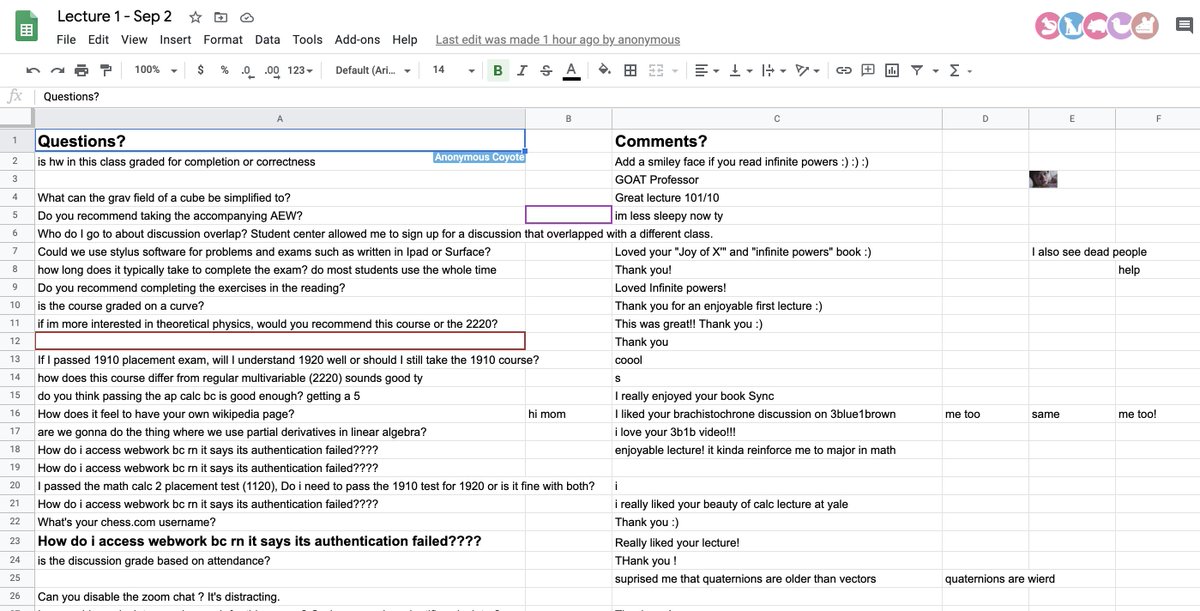
Mathematician, writer, Cornell professor. All cards on the table, face up, all the time.
How to get URL link on X (Twitter) App


 When we apply the function f to all points in the z plane, they get mapped into the w plane. In particular, the black dots get sent to the origin (since they are zeros, by construction!) and the blue, orange, and green circles get transformed as shown here:
When we apply the function f to all points in the z plane, they get mapped into the w plane. In particular, the black dots get sent to the origin (since they are zeros, by construction!) and the blue, orange, and green circles get transformed as shown here: 

 A theorem about the sense in which a golden rotation is “best”
A theorem about the sense in which a golden rotation is “best” 

 By the end of the show, it all made sense. The show was celebrating the real-life mathematician Nasir Ahmed who gave us the means of sending pictures and videos in compressed form. His work helped many folks stay connected during this crazy pandemic. cc @Dan_Fogelman
By the end of the show, it all made sense. The show was celebrating the real-life mathematician Nasir Ahmed who gave us the means of sending pictures and videos in compressed form. His work helped many folks stay connected during this crazy pandemic. cc @Dan_Fogelman 


https://twitter.com/BettySLai/status/1423637484408279046Like many of the commenters in the thread, my own biggest weakness is a tendency to censor myself, and to keep editing the same sentence over and over. But when I dictate, the sentences flow. I pick one small topic and talk to myself about it. It generates a lot of raw material.


 The teacher in me likes the question in the cloudy enclosure, and the gentle way it’s approached after that. The playful drawings help too. The question itself is really deep, and you can see the author appreciates that.
The teacher in me likes the question in the cloudy enclosure, and the gentle way it’s approached after that. The playful drawings help too. The question itself is really deep, and you can see the author appreciates that. 

 For those pointing out that the Fibonacci sequence originated in India, yes, I agree! I learned this from Manjul Bhargava, and discussed the matter in some tweets a few years ago:
For those pointing out that the Fibonacci sequence originated in India, yes, I agree! I learned this from Manjul Bhargava, and discussed the matter in some tweets a few years ago: https://twitter.com/stevenstrogatz/status/1080623259593465856?s=21


https://twitter.com/academath/status/1298196681461243905You can check out Olver’s approach here [PDF]: www-users.math.umn.edu/~olver/ln_/cc.… (ht @academath)